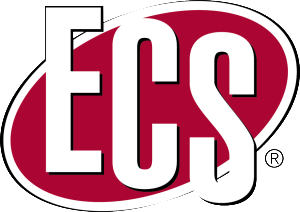 Each year ECS awards up to five Summer Fellowships to assist students in continuing their graduate work during the summer months in a field of interest to the Society. Congratulations to the five Summer Fellowship recipients for 2014. The Society thanks the Summer Fellowship Committee for their work in reviewing the applications and selecting five excellent recipients. Applications for the 2015 Summer Fellowships are due January 15, 2015.
Each year ECS awards up to five Summer Fellowships to assist students in continuing their graduate work during the summer months in a field of interest to the Society. Congratulations to the five Summer Fellowship recipients for 2014. The Society thanks the Summer Fellowship Committee for their work in reviewing the applications and selecting five excellent recipients. Applications for the 2015 Summer Fellowships are due January 15, 2015.
Edward G. Weston Summer Research Fellowship
“Electrodeposition of Hybrid Core-Shell Nanowires” by Tuncay Ozel
As an environmentally friendly alternative energy conversion device, solar cells are used to convert solar energy into electric current. Demonstration of electrically and optically favorable, fully absorbing, yet ultrathin semiconductor layers for solar cells is a key scientific challenge. For example, designing nanowires with a core-shell type semiconductor segment can improve the carrier collection with radial charge separation, whereas integration of plasmonic nanostructures can enhance the photocurrent generation with intensified electric fields. However, a full understanding of the mechanisms behind the electrical and optical enhancement processes is still under debate due to a lack of control over the geometry during the synthesis of nanostructured semiconductor segments and lack of precise integration of the plasmonic structures.
Colin G. Fink Summer Research Fellowship
“Advanced Microfluidic Pumping at Poly(3,4-ethylenedioxythiophene)-Modified Electrodes via AC-Magnetohydrodynamics” by Christena K. Nash
A paradigm shift in microfluidic pumping using redox-magnetohydrodynamics (MHD) that preserves its advantages and resolves problems that previously slowed its application in analytical chemistry (for pumping small volumes and sustaining fluid flow) is demonstrated herein. Miniaturization of chemical analysis for labon- a-chip (LOAC) devices offers portability and automation with less power, reagent and waste volumes, and analysis time. A crucial feature is the programmable manipulation of fluid within the device. MHD microfluidics can provide continuous pumping without channels or moving parts and can stop or reverse fluid flow without the need for valves by switching off or changing the sign of the ionic current, respectively.
Joseph W. Richards Summer Research Fellowship
“Thermogalvanic Waste Heat Recovery in Transportation Energy Systems” by Andrey Gunawan
Waste heat recovery remains an inviting subject for research. Solid state thermoelectric devices have been widely investigated for this purpose, but their practical application remains challenging due to high cost and the inability to fabricate them in geometries that are easily compatible with heat sources. An alternative to solid-state thermoelectric devices are thermogalvanic cells.1-7 The temperature difference between the hot and the cold electrodes creates a difference in electrochemical potential of the redox couples at the electrodes. Once connected to a load, electrical current and power is delivered, converting thermal energy into electrical energy. The aim of this summer project is to extend ongoing research to study the feasibility of incorporating thermogalvanic systems into automobiles.
F.M. Becket Summer Research Fellowship
“Support@Platinum – Nanoparticle Electrocatalytic Nanobowls” by Brandy Kinkead Pilapil
Electrocatalytic materials have become increasingly important over the past decade owing to their broad applicability to low emission and emission-free energy technologies, including fuel cell technology. Platinum is a great electrocatalyst due its generally good stability, high surface energy, electronic structure and interfacial properties. The morphology and chemical environment of Pt can have a substantial effect on its catalytic performance. Presently, carbon (C) black (high surface area C particles) is the most commonly used support for Pt nanoparticle (NP) electrocatalysts in low temperature polymer electrolyte membrane fuel cells (PEMFCs). This support provides a high surface area for dispersion of the Pt NPs and good electrical conductivity.
H.H. Uhlig Summer Research Fellowship
“How Do Cyclic Carbonate Electrolyte Additives Improve Li-ion Battery Performance?” by Hadi Tavassol
Li ion batteries (LIB) are ubiquitous in portable electronics, and are increasingly used in automotive applications. Improvements in stability and long-term capacity of LIBs are essential to satisfy fast growing demands in both sectors. The electrolyte mixture in a LIB is often modified to boost the long term stability of the solid electrolyte interphase (SEI) which forms particularly at the surface of the battery anode. Small quantities of additives are known to increase the stability and long-term cyclability of LIBs. Some of the most widely used additives are cyclic carbonates such as vinylene carbonate (VC) and vinyl ethylene carbonate (VEC). This class of additives contain unsaturated C-C bonds, which are believed to facilitate the formation of a more stable SEI.


